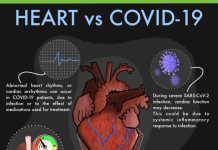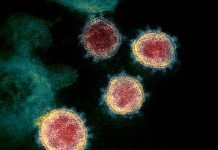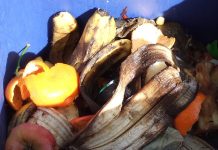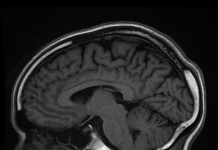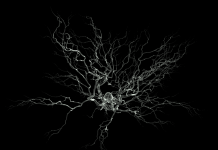Bacterial dormancy is survival strategy in response to stressful exposure to antibiotics taken by a patient for treatment. The dormant cells become tolerant to antibiotics and are killed at slower rate and survive sometimes. This is called ‘antibiotic tolerance’ which is unlike antibiotic resistance when bacteria grow in the presence of antibiotics. Chronic or relapsing infections are attributed to antibiotic tolerance, for which there is no effective treatment. Phage therapy has long been considered but the dormant bacterial cells are non-responsive and refractory to known bacteriophages. Scientists of ETH Zurich have identified a new bacteriophage that uniquely replicates on deep stationary-phase cultures of Pseudomonas aeruginosa. Named ‘Paride’, this bacteriophage could kill deep-dormant P. aeruginosa by direct lytic replication. Interestingly, this novel phage reduced bacterial loads through phage-antibiotic synergy when meropenem antibiotic was added to cultures. Apparently, the novel phage could exploit weak spots in the physiology of dormant bacteria to overcome antibiotic tolerance. These weak spots could be targets of new treatment for chronic infections caused by dormant or inactive bacteria.
Most bacteria on Earth are in dormant state of reduced metabolic activity or in completely inactive form of spore. Such bacterial cells can be readily resuscitated when required nutrients and molecules become available.
Bacterial dormancy or inactivity is the survival strategy in response to stressful external environmental conditions like starvation or exposure to antibiotics taken by a patient for treatment. In later case, the dormant cells become tolerant to antibiotics because cellular processes targeted by the antibiotics to kill bacteria are turned down. This phenomenon is called ‘antibiotic tolerance’ in which case bacteria are killed at slower rate and survive sometimes (unlike in the case of antibiotic resistance when bacteria grow in the presence of antibiotics). Chronic or relapsing infections are attributed to dormant antibiotic-tolerant bacterial cells, often referred to as “persisters”, for which there is no effective treatment.
Phage therapy involving bacteriophages or phages (i.e., viruses that predate bacteria), has long been considered for treating chronic infections by dormant or inactive bacteria however this approach works when host bacterial cells are undergoing growth. The dormant or inactive bacterial cells, however, are non-responsive and refractory to the bacteriophages which either avoid adsorption to the bacterial cell surfaces or hibernate in the dormant cells until resuscitation.
Known bacteriophages do not have ability to infect antibiotic-tolerant, deep-dormant or inactive bacteria. It was thought that given diversity, phages with ability to infect dormant cells may exist in nature. Researchers have now identified one such novel bacteriophage for the first time.
In a recently published study, scientists of ETH Zurich report isolation of a new bacteriophage that uniquely replicates on deep stationary-phase cultures of Pseudomonas aeruginosa in the laboratory. They have named this bacteriophage Paride. This phage could kill deep-dormant P. aeruginosa by direct lytic replication. Interestingly, this novel phage reduced bacterial loads through phage-antibiotic synergy when meropenem antibiotic was added to P. aeruginosa-phage cultures.
Apparently, the novel phage could exploit weak spots in the physiology of dormant bacteria to overcome antibiotic tolerance. These weak spots could be targets of new treatment for chronic infections caused by dormant or inactive bacteria.
***
Reference:
- Maffei, E., Woischnig, AK., Burkolter, M.R. et al. Phage Paride can kill dormant, antibiotic-tolerant cells of Pseudomonas aeruginosa by direct lytic replication. Nat Commun 15, 175 (2024). https://doi.org/10.1038/s41467-023-44157-3
***






